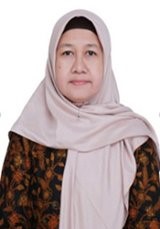Formulation of Cream Containing Ethanolic Extract of Mugwort (Artemisia vulgaris L.) and Its Antifungal Activity Testing on Candida albicans ATCC 10231
Downloads
According to the people of the Tengger Tribe for generations, a Mugwort plant (Artemisia vulgaris L.) was believed to be useful as a treatment for fungal infections. Based on research reports, the Mugwort plant (Artemisia vulgaris L.) contained bioactive compounds such as flavonoids, tannins, saponins, steroids, and alkaloids. These active compounds had activity as an antifungal. This study aimed to formulate, evaluate, and test the activity of a cream preparation with type m/a ethanol extract of Mugwort (Artemisia vulgaris L.) in inhibiting the growth of the fungus Candida albicans ATCC 10231. This type of research was laboratory experimental research. Samples were taken by simple random sampling to test the inhibition of Candida albicans ATCC 10231. The results of the physical quality test of Mugwort leaf extract (Artemisia vulgaris L.) cream from the 4 formulation with test parameters including organoleptic, pH, spreadability, adhesion, and viscosity test, were in accordance with the established quality standards. The results of the physical evaluation of the antifungal cream showed organoleptic properties, homogeneity, pH 6, spreadability test F1 5.2, FII 5.1, FIII 5.3, and FIV 5.4 cm, FI adhesion test 5.3, FII 5.3, FIII 5.4, and FIV 5.5 seconds. Meanwhile, in the viscosity test the results were FI 24,606, FII 30,836, FIII 40,198 cP, and FIV 38,695 cP. The inhibition test results were analyzed by calculating the average for each concentration, performed three times. The results showed that the ethanol extract of Mugwort leaf (Artemisia vulgaris L.) cream had antifungal effectiveness with an average value of 8.6 mm at a concentration of 2.5% (moderate category), 10.3 mm at a concentration of 5% (medium category), 11 mm at a concentration of 10% (strong category) and 12 mm at a concentration of 20% (strong category). The study concluded that the ethanol extract of Mugwort Leaf (Artemisia vulgaris L.) cream was effective in inhibiting the growth of Candida albicans ATCC 10231.
Keywords: Mugwort (Artemisisa Vulgaris L), Antifungal, Candida Albicans ATCC 10231
Aziz, Y., Peranginangin, J. & Sunarni, T. (2019) ‘Ethnomedicin studies and antimicrobial activity tests of plants used in the Tengger Tribal Community’, 1st International Conference of Health, Science & Technology (ICOHETECH), pp. 160–164.doi: 10.47701/icohetech.v1i1.792.
Björklund, E., Larsson, T. N. L., Jacobsson, S. O. P. & Fowler, C. J. (2014) ‘Ketoconazole inhibits the cellular uptake of anandamide via inhibition of FAAH at pharmacologically relevant concentrations’, PLoS ONE, 9(1), pp. e87542.
doi: 10.1371/journal.pone.0087542.
Ekiert, H., Pajor, J., Klin, P., Rzepiela, A., Sleasak, H. & Szopa, A. (2020) ‘Mugwort (Artemisia vulgaris L.) in the history of medicine and its possible uses’, Molecules, 25, pp. 1–32.
doi: 10.3390/molecules25194415.
Farret, A. B. & Montanari, T. (2019) ‘Efeito de Artemisia L. (Asteraceae) no ciclo reprodutivo feminino: uma revisão’, Revista Fitos, 13(2), pp. 163–177.
doi: 10.17648/2446-4775.2019.695.
Gustavo, K., Helena, L. & Cabral, V. (2024) ‘Candida albicans: Virulence factors, pathogenesis, and ways to diagnose and control its infection’, Research Society and Development, 13(1), pp. 1–10. doi: 10.33448/rsd-v13i1.44781.
Kiprotich, V. & Vugigi, S. (2023) ‘Formulation and assessment of a Ricinus communis leaf extract-based shampoo for the treatment of Tinea capitis’, African Journal of Pharmacy and Alternative Medicine, 2(1), pp. 11–20.
doi: 10.58460/ajpam.v2i1.38.
Octora, D. D., Nababan, A. J. & Simarmata, P. C. (2024) ‘Testing the activity of antimicrobial cream formulation of ethanol extract of kedondong leaves (Spondias dulcis) against Propionibacterium acnes and Staphylococcus aureus’, Jurnal Farmasimed (JFM), 6(2), pp. 173–177. doi: 10.35451/jfm.v6i2.2118.
Ratnah, S., Salasa, A. M. & Ramadhan, D. S. F. (2023) ‘Formulation, physical quality, and microbial contamination tests of anti-acne cream from longan (Euphoria longan [Lour. Steud.]) seed extract’, Tropical Journal of Natural Product Research, 7(7), pp. 3297–3305.
doi: 10.26538/tjnpr/v7i7.5.
Robinson, D. E., O’Donovan, J. T., Sharma, M. P., Doohan, D. J. & Figueroa, R. (2003) ‘The biology of Canadian weeds: 123. Senecio vulgaris L.’, Canadian Journal of Plant Science, 83(3), pp. 629–644. doi: 10.4141/P01-124.
Sachivkina, N. P. (2020) ‘Studies of biofilms and phenotypic characteristics of Candida fungi’, Veterinary Microbiology, 2(33), pp. 132–138.
doi: 10.29326/2304-196X-2020-2-33-132-138.
Thombre, N. A., Laddha, U. D., Ahire, E. D., Tajanpure, A. B., Surse, S. N., Kakad, S. P., Kakad, A. V., Anumone, D. & Sonawani, R. (2023) ‘Formulation development and evaluation of herbal antifungal cream by using Psidium guajava leaf extract’, International Journal of Drug Delivery Technology, 13(4), pp. 1229–1234.
doi: 10.25258/ijddt.13.4.18.
Copyright (c) 2024 Yaya Sulthon Aziz, Naila Matsna Assyifa, Amalia Rahma Pratiwi, Siska Tri Wahyuni

This work is licensed under a Creative Commons Attribution-ShareAlike 4.0 International License.
BIKF by Unair is licensed under a Creative Commons Attribution-ShareAlike 4.0 International License.
1. The journal allows the author to hold the copyright of the article without restrictions.
2. The journal allows the author(s) to retain publishing rights without restrictions
3. The legal formal aspect of journal publication accessibility refers to Creative Commons Attribution Share-Alike (CC BY-SA).
4. The Creative Commons Attribution Share-Alike (CC BY-SA) license allows re-distribution and re-use of a licensed work on the conditions that the creator is appropriately credited and that any derivative work is made available under "the same, similar or a compatible license”. Other than the conditions mentioned above, the editorial board is not responsible for copyright violation.























